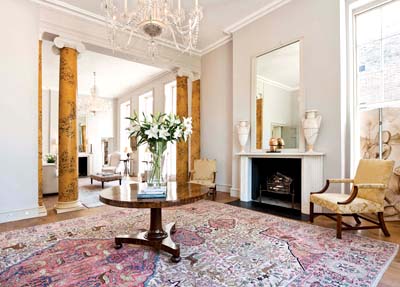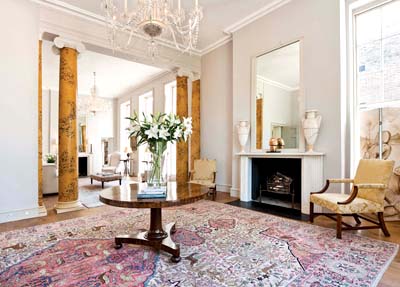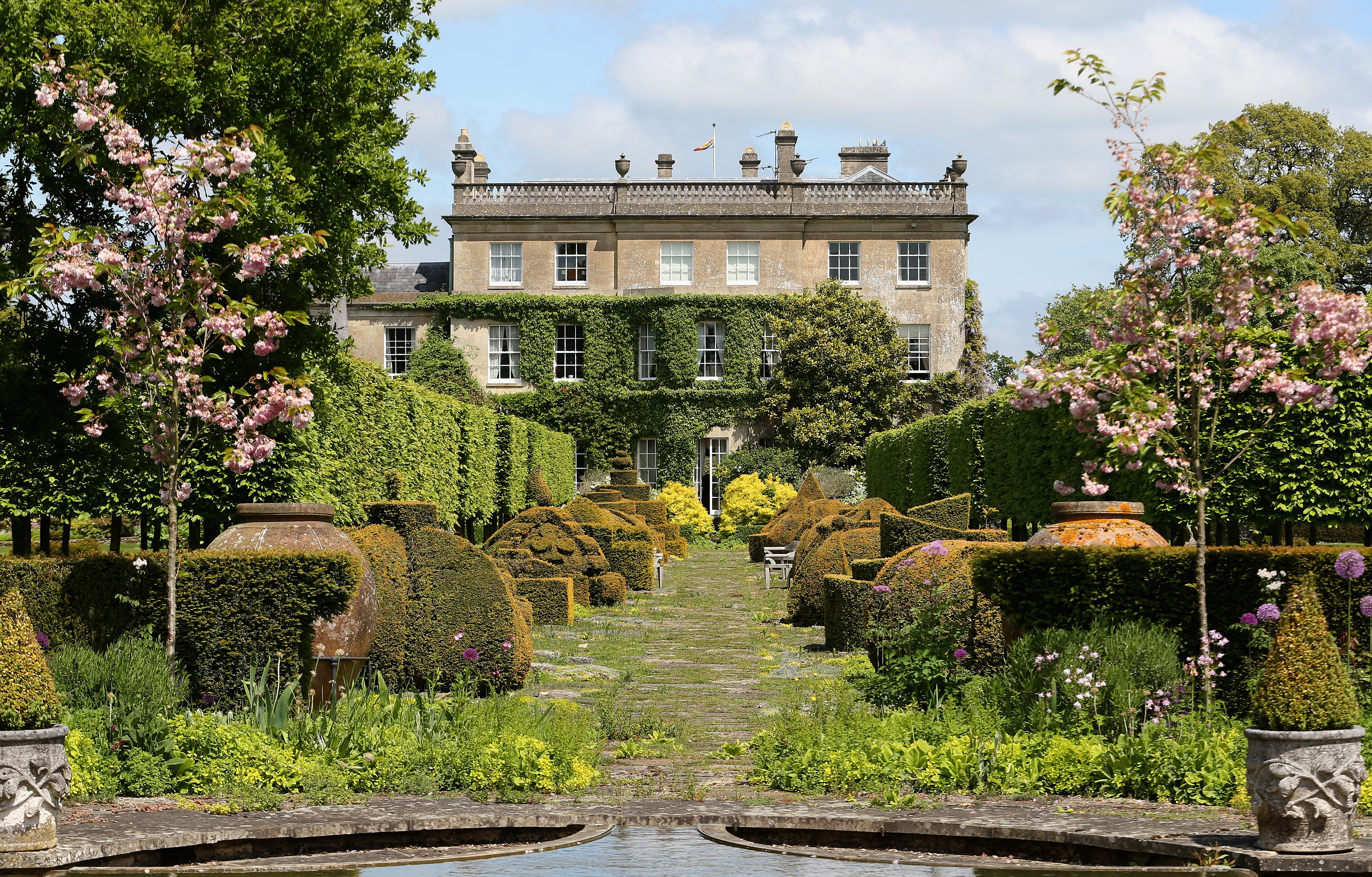Luxury property for sale in Fitzrovia, London
An outstanding example of a central London property for sale this month illustrates the appeal of Fitzrovia to those who want to be near the action


If you look at a map of London with Hammersmith to the west and the Isle of Dogs in the east and stick a pin in the middle, the chances are you'll end up in Fitzrovia. Despite this convenient location it's perfect for London's Theatreland, Soho and the West End, and also offers easy access to the City-the area slipped off the radar after its 1920s Bohemian heyday.
Fitzrovia was a name borrowed from the Fitzroy Tavern, where members of the Bloomsbury Group and other literati met to chew the fat. The area is roughly bordered by the Howard de Walden Estate to the west and Gower Street to the east. It straddles two boroughs-Camden and the City of Westminster-and two postcodes, which, for some, is the reason why its identity as a neighbourhood in its own right is sometimes lacklustre.
When media and advertising companies moved in during the 1980s and 1990s, Fitzrovia garnered a reputation for being a nine-to-five zone, devoid of character at the weekend. Today, however, high-profile buyers are putting the area back on the residential map. ‘As we head to the Olympics and attention focuses towards the newly fashionable areas in east London, people are becoming less and less south-west in their thinking,' believes James Taylor of James Taylor Property. ‘And I should know-I was a Chelsea-based agent for years.'

* For more properties like this every week, subscribe and save
‘It's regarded as a more residential and alternative option to Soho while still being on the fringe of all the action,' explains Charles Peerless of Winkworth's West End office. ‘I've been covering this patch for 20 years, so have seen how the area has begun to change. A lot of the buildings are still mixed use, but there are quirky little passageways, plenty of historic houses and small Georgian terraces.'
This week, Mr Taylor is launching what he believes is one of London's most important houses to the market. Anyone who has read Ian McEwan's Saturday will recognise the smart terrace houses of Fitzroy Square, with the BT Tower looming in the background, from the front cover. Along with restaurant critic Fay Maschler, Guy Ritchie, Griff Rhys Jones and Linda Bennett, owner of the shoe emporium LK Bennett, Mr McEwan has made the Georgian square his home.
Grade I-listed No 33 forms part of the last project that Robert Adam took on before his death in 1792, long before the square was completed. The house stands in the west pavilion of the south terrace and has a distinctive façade, with the Ionic Order at first-floor level with two original Liardet roundels depicting Classical scenes.
Sign up for the Country Life Newsletter
Exquisite houses, the beauty of Nature, and how to get the most from your life, straight to your inbox.
‘We aren't describing it as one of London's most important houses glibly: not only does it have the Robert Adam connection, but it was also the house where Roger Fry started the Omega Workshops the artistic wing of the Bloomsbury Group-in 1913 and, today, all 7,500sq ft of it has been res-tored to the highest standard.'
In 1930, No 33 became the London Foot Hospital, and it was after nearly 70 years under NHS stewardship that the current owners, chairman of the Soane Museum Peter Sheppard and his partner, Keith Day-who recently sold their design company Sheppard Day to Conran-took the project on. ‘They tried three times to buy it before they were successful-they were determined,' explains Mr Taylor. ‘It's been a lot of hard work, but the result is exquisite. They are now selling up to move to the country.'
The total restoration lasted five years and was carried out under the architectural supervision of Ptolemy Dean and Russell Taylor. As well as replacing many of the features lost while the building was used as an institution, they have also installed underfloor heating, invisible speakers, a Crestron management system to control the Lutron lighting and a lift that allows food and drink from the kitchen to be taken to most of the entertaining rooms of the house. 33, Fitzroy Square, with its adjoining mews house, is on the market with James Taylor Property for £10.75 million (020-7724 4777)
-
 Spam: The tinned meaty treat that brought a taste of the ‘hot-dog life of Hollywood’ to war-weary Britain
Spam: The tinned meaty treat that brought a taste of the ‘hot-dog life of Hollywood’ to war-weary BritainCourtesy of our ‘special relationship’ with the US, Spam was a culinary phenomenon, says Mary Greene. So much so that in 1944, London’s Simpson’s, renowned for its roast beef, was offering creamed Spam casserole instead.
By Country Life Last updated
-
 Sanderson's new collection is inspired by The King's pride and joy — his Gloucestershire garden
Sanderson's new collection is inspired by The King's pride and joy — his Gloucestershire gardenDesigners from Sanderson have immersed themselves in The King's garden at Highgrove to create a new collection of fabric and wallpaper which celebrates his long-standing dedication to Nature and biodiversity.
By Arabella Youens Published
